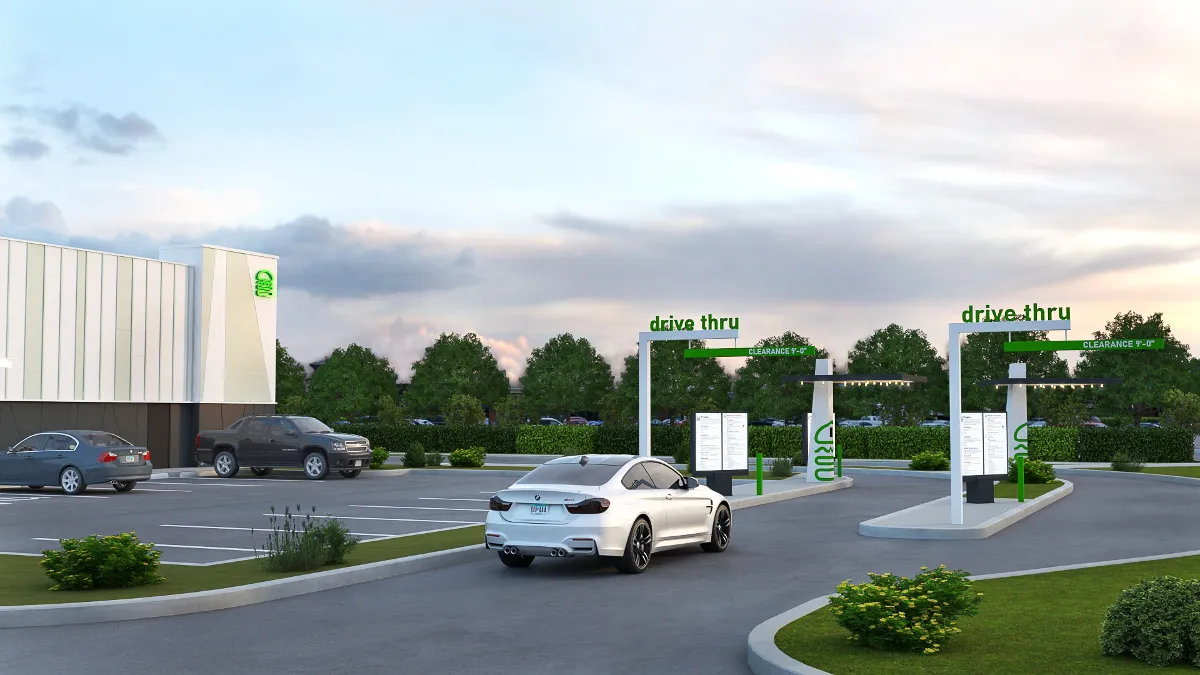Dive Brief:
- Shake Shack will open its first-ever drive-thru location on Dec. 6 in Maple Grove, Minnesota. The restaurant, located in an outdoor mall, includes a digital menu board, a two-lane ordering system and a separate pickup window. Guests can order while in the drive-thru lanes or order ahead via the company's app and website.
- The fast casual chain is targeting 10 drive-thrus in 2022 as well as 45 to 50 new stores, its largest expansion to date. Over half of its new stores will be in suburban markets, with an emphasis on freestanding and shopping center locations that can offer drive-thru and drive-up options.
- Shake Shack's drive-thru fits into a sector-wide emphasis on off-premise, driven by pandemic restrictions and consumer demand for off-premise channels. Arby's, Wendy's, Taco Bell, Burger King, KFC and McDonald's have introduced innovations at the drive-thru, for example, while Chipotle is accelerating its Chipotlane model and Sweetgreen is also adding its first-ever drive-thru location.
Dive Insight:
Shake Shack's COVID-19 recovery has been slower than some of its peers in part because the brand doesn't have a drive-thru model, which could've generated significant additional revenue. The company first announced its intention to add drive-thrus and pickup windows in May 2020, barely two months after the first major shutdowns related to COVID-19 in the United States changed consumer habits almost overnight. The company is targeting markets like suburban areas of Kansas City, Orlando and Detroit, CEO Randy Garutti said during the company's Q3 earnings call in November.
"These are drive-thru-heavy markets where we can optimize our learnings, adapt, pivot and add to the dialogue of this evolving new format for us," Garutti said. "Our robust development pipeline is comprised of many formats, both urban and suburban, and spans a variety of regions. And we view our broad and diverse portfolio of Shacks as critical to our growth strategy going forward."
A greater emphasis on suburban stores will also benefit the company as its urban locations were slower to recover than those in suburban locations. During Q3, all of its regions outside New York City surpassed 2019 same-store sales levels, for example.
By incorporating a second drive-thru lane and digital-order-ahead capabilities, Shake Shack's model also fits into the company's digital transformation, a strategy reliant on heavy investment into omnichannel experiences, according to Garutti. As of fiscal September, the chain had retained 80% of its digital channel sales compared to fiscal January, despite in-store traffic returning.
Shake Shack’s drive-thru design seems well-suited to handle an increase in omnichannel orders. The Minnesota location features a split-kitchen, for instance, with a separate area dedicated to preparing drive-thru orders. The company also notes employees will take orders and payment at multiple points, based on demand, and the location will include contactless payment at the order point for additional convenience.











